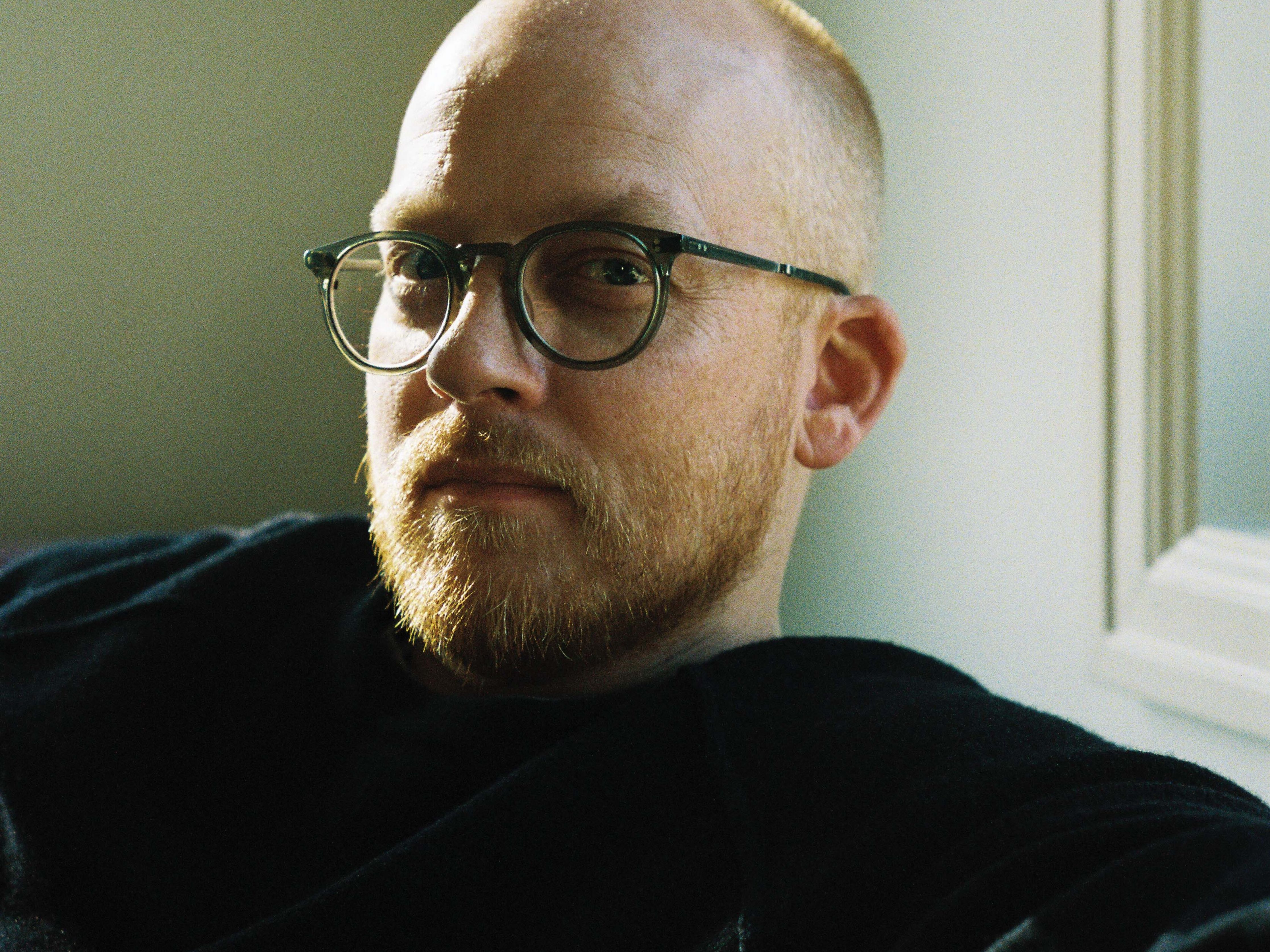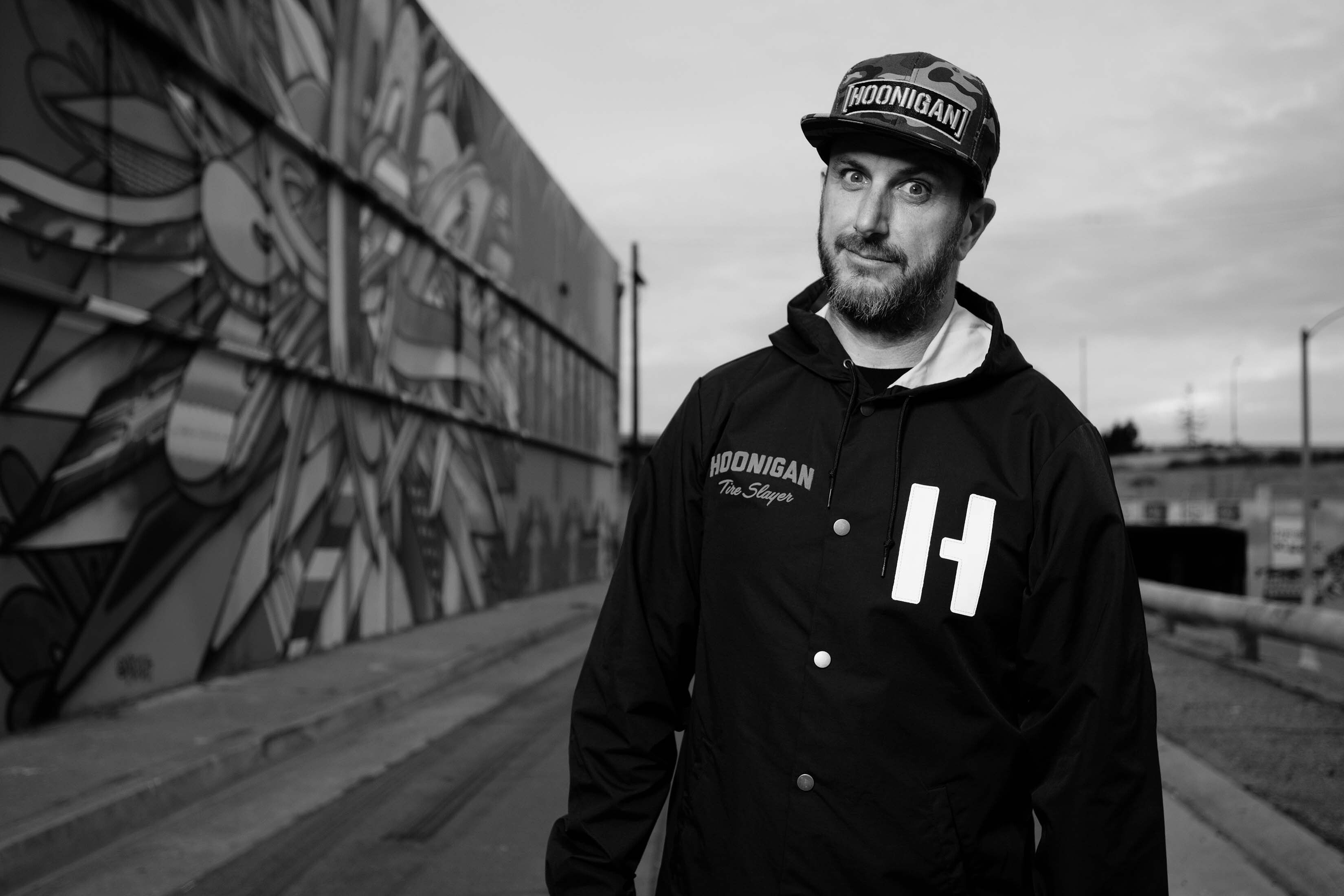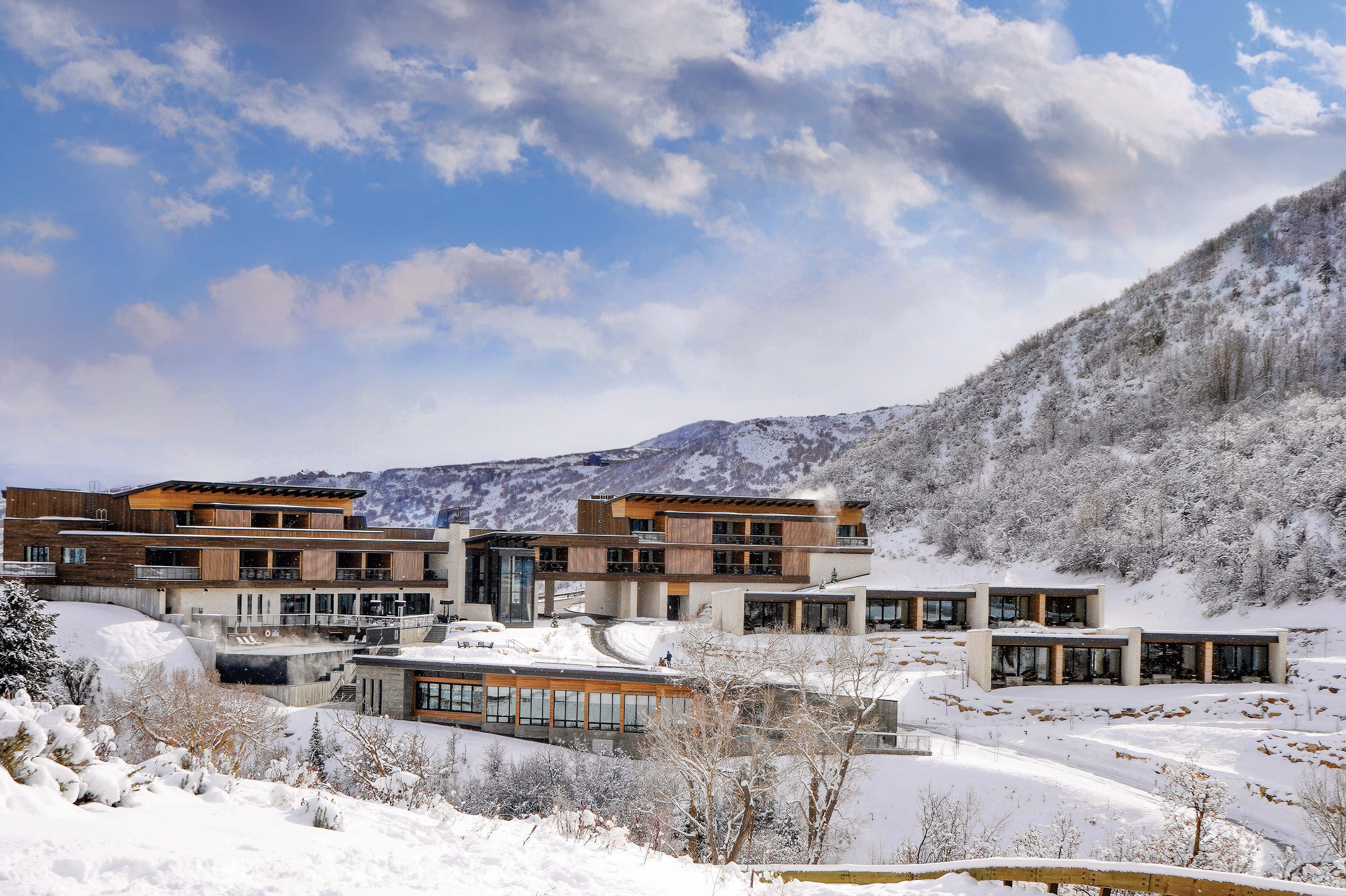Art + Activism
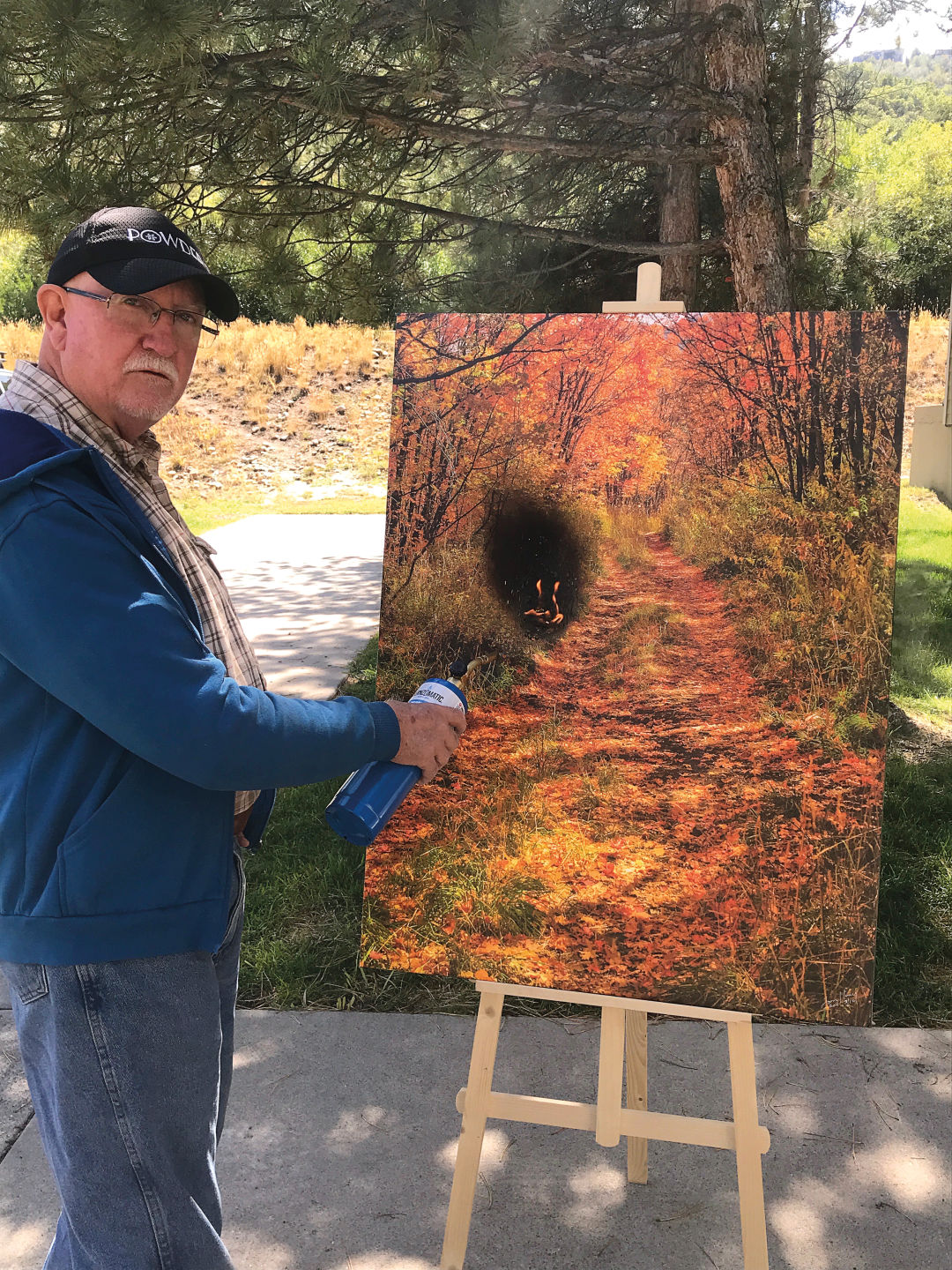
Landscape photographer Tom Horton sets his work aflame
Image: Courtesy Tom Horton
It’s a brisk day in Park City. Landscape photographer Tom Horton has set up an easel on a concrete patio outside his studio. He carefully places a 30” x 40” canvas featuring a peaceful autumn scene—a faded dirt road flanked by trees and wild grasses and covered in a blanket of orange, sun-dappled leaves. Horton pauses to pick up a blowtorch, lights it, then places the flame directly on the canvas. A gaping, black hole forms, and the fire quickly reaches the easel. He drops the canvas to the ground and stamps it out. The artwork is essentially ruined, and a tense, poignant mood hangs in the air.
Why would an artist destroy his own work?
The idea is to make a point, articulating what Horton sees as an urgent problem: privatization and repurposing of public lands for mining, oil, livestock, and other development. “Public lands are my resource,” he explains. “They’re the resource of every nature or outdoor photographer. They’re our raw material, and our raw material is going away.” One day, he found himself wondering, “Why am I bothering to show people these amazing, gorgeous places when they’re just going to go away?” He decided to damage his works in the ways he saw lands being damaged. The results are transformative as much as destructive, as damaged pieces are still presented as works of art, but with an “edge” that changes their look, meaning, and purpose. Whether you agree with his views or not, the wrecked artworks are a form of activism meant to stir emotions, spark conversations, and inspire change.
The Bigger Picture
While politics and art have always been entwined in both direct and subtle ways, there is a recent uptick in activist art that is generating fresh dialogue about the artist’s place in society. “Art is a reflection of the time and place it was made, but the role of art has shifted over time,” explains Nancy Stoaks, curator at Kimball Art Center. “More and more dissent or protest has appeared in the artwork of the past 200 years, peaking perhaps in the last 50 years.” Issues ranging from feminism to LGBTQ rights to violence and corruption inspire artists around the world to make statements through their work.
In Utah, Stoaks has noticed an emphasis on environmental conservation. “We are blessed with incredible landscapes,” she says, “and concern for these lands translates into some of the artwork being created locally, like [Horton’s] photographic landscapes that are ripped, burned, covered in oil, or otherwise destroyed.” For her part, Stoaks strives to present “a balanced range of exhibitions that will be thought-provoking and relevant to our community,” which sometimes means diving into complex social topics. Over the past year, for example, she has organized a panel discussion about art and activism and curated exhibitions by internationally acclaimed artists Sue Flood and Zhi Lin, whose bodies of work prompted public talks about climate change and migrant workers, respectively.
“I do believe art has the power to generate social change,” says Stoaks. “[It can] present new ideas or convey the experiences of others in a profound, sometimes life-changing way.” She encourages everyone to tap into that potential by supporting artists and fellow institutions that are doing challenging work, like the Utah Museum of Contemporary Art (UMOCA) and Utah Museum of Fine Arts (UMFA), which she sees “generating conversation around art, community, and activism in many arenas.”
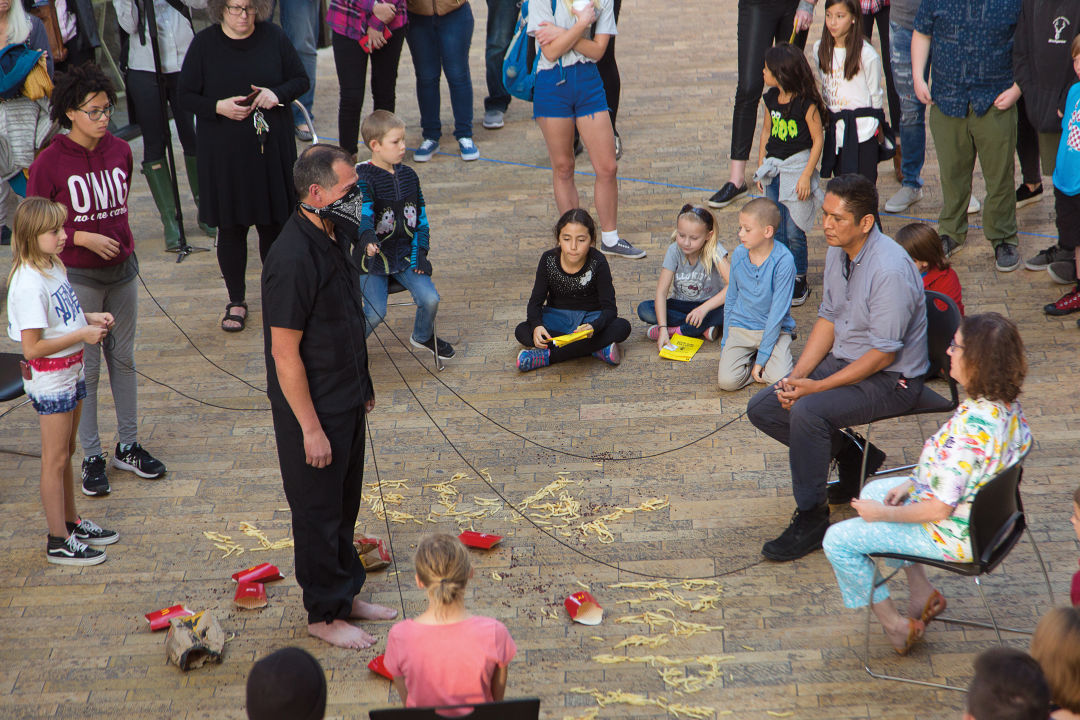
Jorge Rojas performs “tether” at Salt Lake City Public Library. His participatory work attempts to embody the experiences of immigrants in three different stages of the process: before, during and after immigration.
Image: Winston Inoway
A Community Effort
As director of learning and engagement at the UMFA—Utah’s flagship art museum—Jorge Rojas is charged with overseeing education and connecting the community through art. Working simultaneously as an educator, curator, and artist, he is in the unique position of seeing the impact of art activism through multiple lenses.
“What we need to do is learn from our community what is important to them, what is relevant to them,” says Rojas, citing efforts to do just that through the UMFA’s newest outreach initiative, ACME (Art. Community. Museums. Education.). ACME features an experimental gallery, community meet-ups, and a student program, all aimed at rethinking the public role of museums. “Art has an ability to expand our individual and collective imaginations about the meaning of our existence on this planet,” he explains, and there is never a shortage of topics to explore. “[It is] political, but it’s also very healing; it doesn’t have to be all heavy. It can be uplifting and empowering in bringing people together.”
That said, Rojas does not shy away from using art as a vehicle for asking hard questions. In recent years, his independent art and curatorial projects have focused on controversial subjects, including public performances about racial profiling and immigration. While the work can be “exhausting, scary, and emotionally difficult,” Rojas is excited about what he finds to be “a fertile time” for art in Utah.
“The way to participate is to be involved,” he says, citing a plethora of opportunities. “Come to the museum. Participate in those conversations, and don’t be afraid to ask ‘dumb’ questions, because there really shouldn’t be any dumb questions. Together we can learn how art can empower voices, build identity, point at issues that are timely and important, and educate people on our own power through our own creative voices.”
Curious?
Check out these resources to keep up with conversation-sparking art.
Of note: During Covid-19, many of these entities are temporarily closed to the public; however, be sure to check each organization's social media and online presence for updates and virtual happenings.
Kimball Art Center
kimballartcenter.org
Park City Film
parkcityfilm.org
Park City Gallery Association
parkcitygalleryassociation.com
Park City Institute
parkcityinstitute.org
Park City Summit County Arts
pcscarts.org
Sundance Institute
sundance.org
UMFA
umfa.utah.edu
UMOCA
utahmoca.org

